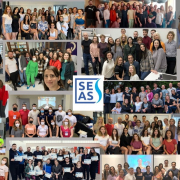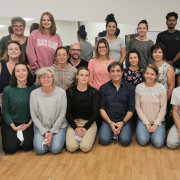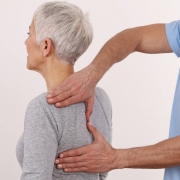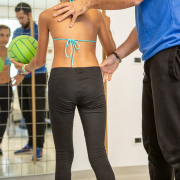Margherita, sport, and scoliosis: a possible pairing
What distinguishes ISICO in the treatment of scoliosis is a therapeutic approach that allows you to combine treatment with exercises and corsets with sporting passions, even high-level competitive ones. As happened to Margherita, 14 years old, from the Marche region in Italy and an aerobic gymnastics champion.
We asked our young patient to share her experience while she is preparing for an important sporting event, the Aerobic Gymnastics World Championships, scheduled for Pesaro, Italy in September. Let’s discover with her how it is possible to reconcile sport and a brace.
How did your passion for aerobic gymnastics arise?
It all started as a game with physical gymnastics. I was only 4 years old. Then my coach suggested the aerobics course to me, and from that moment on I became passionate about this sport.
When were you diagnosed with scoliosis?
I was 8 years old, it was in 2018…
What has been the impact of scoliosis on your daily life, at school and with friends?
At the beginning, I was monitored periodically and did specific exercises with my physiotherapists, who were special people for me, helping me to better understand my condition. As I grew up, my curve got worse, so I started the journey with ISICO and I found myself very well.
Do you wear a brace? For how many hours a day?
I started wearing the brace one year ago; it wasn’t easy because initially I had to wear it 20 hours a day; after a few months, it was decreased to 18 hours.
How do you reconcile the brace with sporting activity? How many hours do you train?
When I wore the brace for 20 hours, I only took it off for workouts. Now, my ISICO specialist, Dr. Fabio Zaina, reduced the hours of wearing. I generally train between three and four hours a day, six days a week. In the summer, however, the hours increase. There are also double workouts.
What would you recommend to a peer who is starting corset therapy and playing sports?
Sport, like brace wearing, requires consistency, continuity, and tenacity. The first few weeks in a brace are not easy, but then everything improves and you get used to it. Especially my back has improved, and that’s the most important thing.
What are your next goals and competitions?
In this period I am training for the World Championships, which will be held in Pesaro, Italy in September.
Good luck, Margherita!
We remind you that ISICO’s innovative approach includes:
• SEAS: specific exercises for scoliosis
• Personalized Therapy: each patient receives a tailor-made treatment plan, which takes into account specific individual needs and conditions
• Multidisciplinary Approach: the therapeutic team is made up of physiotherapists, orthopedists and spine specialists, who work together to offer a complete approach, both physical and psychological, integrated to the treatment of scoliosis.











